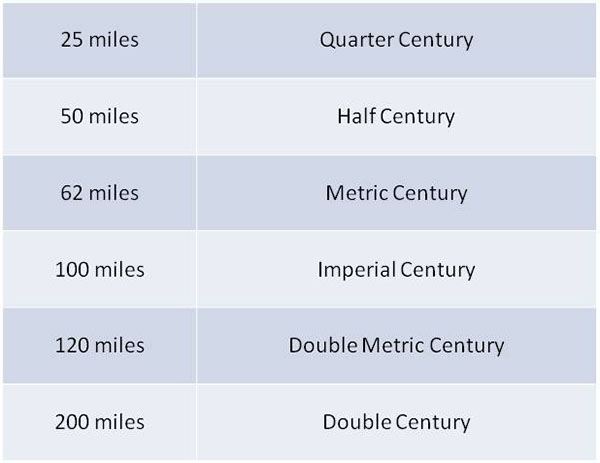A century ride, or simply “a century” as cyclists call it, is the ultimate test of endurance and determination for any cyclist. It’s a bike ride that covers a distance of 100 miles (162km) within a single day on two wheels that requires a lot of physical and mental preparation. But let me tell you, the feeling of accomplishment after completing a century is like nothing else.
Participants in a century ride will typically start early in the morning and will have to complete the ride within a certain time limit. Some century rides are timed races, while others are more casual events with no time pressure. century rides can be a long and challenging experience, but also a rewarding one.
History of Century Rides
When it comes to the history of century rides, it’s safe to say that we cyclists have been pushing ourselves to the limit for quite some time. The first-century rides can be traced back to the early days of cycling when brave souls would set out on their trusty steeds to see just how far they could go.
The origins of century rides can be traced back to the late 19th century when cycling first began to gain popularity as a sport and a mode of transportation. Back then, a century ride was considered a true test of a cyclist’s endurance and determination. Riders would set out on their heavy, wooden-wheeled bikes with nothing but a map and a compass to guide them. They would often ride for days on end, covering hundreds of miles on rough and unpaved roads.
As cycling technology evolved over the years, so did the century ride. By the early 20th century, steel-framed bikes had replaced wooden ones, and riders were able to cover greater distances in shorter amounts of time. In addition, the roads improved and the century rides became more accessible to the general public. The first recorded century rides were organized in the early 20th century, often as charity events, to raise money for a good cause.
The popularity of century rides continued to grow throughout the 20th century, and they became a rite of passage for many recreational and competitive cyclists. As the century ride evolved, it became more of a social event and less of a race. Many century rides are now organized as mass-participation events, drawing thousands of riders from all over the world.
Today, century rides have become a staple of the cycling world, with many organized events held annually all around the world, drawing thousands of participants. They are often organized as charity events, group rides, or races, and offer a great opportunity for cyclists to test their limits, make new friends, and enjoy the beauty of the road.
Different Types For You To Choose
When it comes to century rides, there are a few different types to choose from. There are organized charity events, where cyclists come together to raise money for a good cause. These are usually more casual and less competitive, with no time pressure to finish. Then there are group rides, where a group of cyclists set out together to tackle the 100-mile distance. These can be more social and a great way to make new cycling friends. And finally, there are timed century rides, which are more competitive and require a higher level of fitness and training.
No matter what type of century ride you choose, one thing is for sure: it’s not going to be easy. A century is a long and challenging journey, both physically and mentally. But that’s what makes it so rewarding. The sense of accomplishment you feel after completing a century is indescribable.
If you’re thinking about tackling a century, the first thing you need to do is get in shape. A century is no walk in the park, and you’ll need to put in the miles to prepare. This means hitting the road and building up your stamina and endurance. You’ll also need to make sure your bike is in good working order, as a century can put a lot of wear and tear on your equipment.
Another important aspect to consider is your nutrition. A century is a long ride, and you’ll need to fuel your body properly to make it through. This means eating a balanced diet and bringing enough food and water to sustain you on the ride. During the century ride, it’s important to eat and drink regularly, to avoid getting hungry or thirsty.
As you approach the century ride, it’s also important to have a plan. This means mapping out your route, estimating the time it will take, and figuring out what you’ll need to bring with you. A good plan will help you stay focused and on track, and will make the ride a lot more enjoyable.
A cyclist who completes a century ride is often called “Centurions” and it is considered a rite of passage among the cycling community. Some people also do a century ride as a personal challenge and goal. Completing a century ride requires a lot of physical and mental preparation and it is a great way to test your limits.
What is the Difference Between a Gran Fondo and a Century Ride?
A gran fondo and a century ride are both long-distance cycling events, but there are some key differences between the two.
As previously stated, a century ride is a bike ride that covers a distance of 100 miles (162 kilometers) in a single day. Century rides are popular among both recreational and competitive cyclists because they require a high level of physical fitness, endurance, and planning. Century rides are frequently organized as fundraising events, group rides, or races.
A gran fondo is a long-distance road cycling event that is usually organized as a mass-participation ride rather than a race. Gran fondo distances vary, but they are typically longer than a century ride, ranging between 100 and 150 miles (162-240km). A gran fondo is more about participation and enjoyment than competition and performance.
Another distinction is that gran fondo often includes timed segments, also known as “King/Queen of the Mountain,” where riders can compete against the clock and other riders, but the overall event is not a race. These sections are optional and may be skipped by the rider.
A century ride is usually a personal challenge or a test of endurance and determination, whereas a gran fondo is more of a social event, often attracting thousands of riders, with a festive atmosphere and a focus on participation, with aid stations, food, and other services provided along the way.
In short, a century ride is a 100-mile long-distance cycling event that is often organized as a race or personal challenge, whereas a gran fondo is a longer-distance event that is usually organized as a mass-participation ride that focuses on participation and enjoyment rather than competition.
Finally, remember to have fun! A century is a big challenge, but it’s also a great way to enjoy the scenery and the company of other cyclists. So, don’t take it too seriously and just enjoy the ride.
Finally, a century ride is an excellent way to push yourself both physically and mentally. It’s a long and difficult journey, but the sense of accomplishment you feel when you finish it is unparalleled. So, if you’re up for the ultimate endurance and determination test, hop on your bike and go for a century ride. Trust me, you won’t be sorry.


